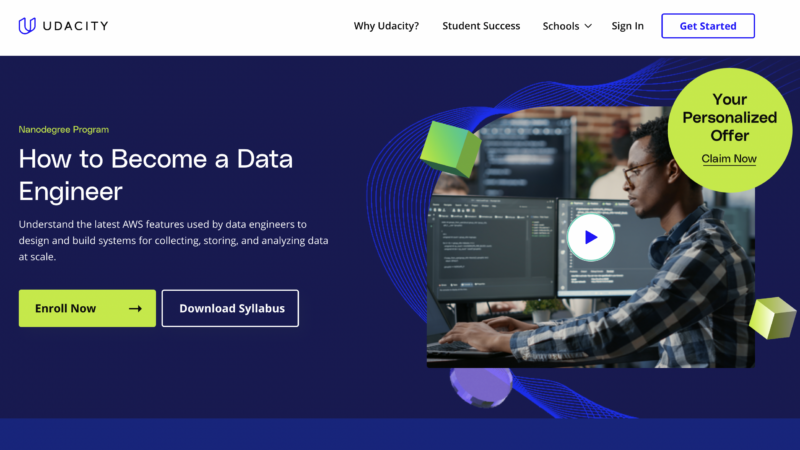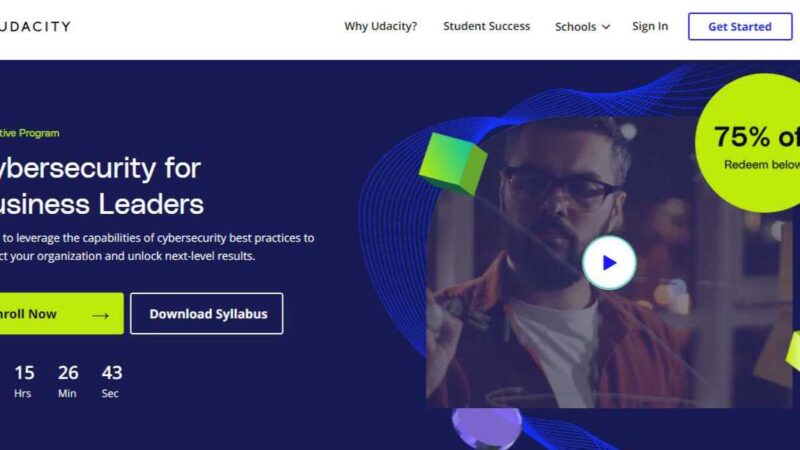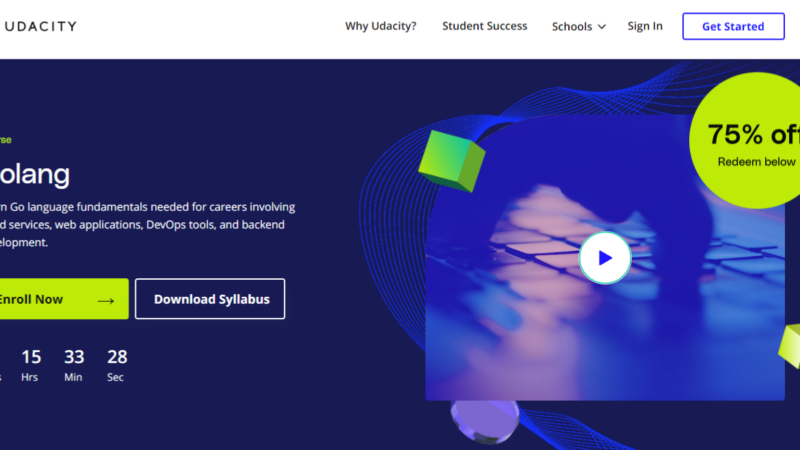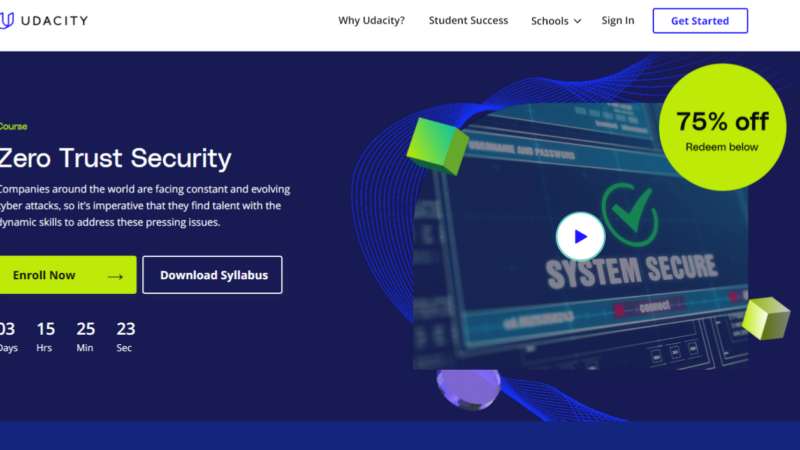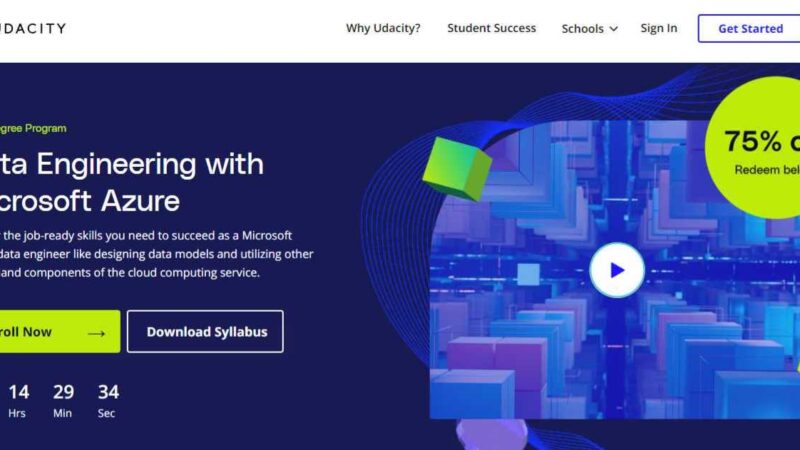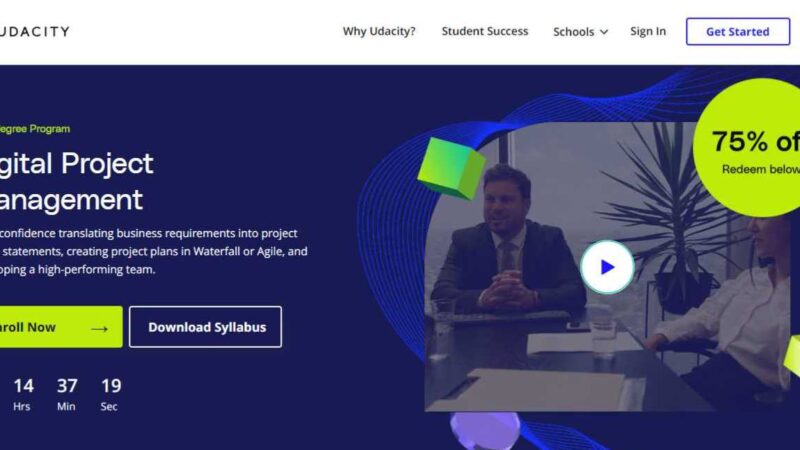Udacity Programming for Data Science with R Nanodegree Review

As the world moves toward a more digital way of doing things, understanding data becomes a huge priority. Data holds a wide range of useful information that companies can use to better understand their potential customers, create more efficient operations, and create more effective marketing campaigns. The only problem is, data is difficult to read and is normally presented in an unorganized form that the normal computer-user cannot read. That is where the programming language R comes in, providing a way to translate large groups of numbers and data into readable graphs and figures.
The ability to work with big data and relay messages between companies and their data is a soaring career. Of course, this isn’t a career you can just hop into, it takes some learning and practice before landing your first job. That is where Udacity’s Programming for Data Science with R Nanodegree may come in handy. It claims to provide learners with all they need to break into the exciting world of data science-including hands-on projects that mimic real-world situations. In this review, we will break down the course, seeing if the academy stands up to its promise to deliver a well-rounded learning experience for those wanting to learn the language of R.
A Bit About Udacity
If you haven’t heard of Udacity, you’ve probably never searched for online technical courses. They have been around for a few decades, expanding into the huge online learning portal that it is today. Initially, two professors out of Stanford University started the online academy to bring free technical courses to anxious learners across the globe. With just a few classes and a few professors to start with, Udacity was born and immediately started to take off. They have continually captured the interest of large industry leaders, some of which have teamed up with the academy to create courses for learners. They have a solid reputation as an academy, one that has been praised by both instructors and learners alike.
What’s a Nanodegree?
Apart from free courses and tutorials offered at Udacity, there are also nanodegrees. These are more in-depth courses that focus on one topic, meant to provide learners with all they need to break into one specific part of the technical world. Nanodegrees are meant to take less than one year, most taking anywhere from two to six months to complete. Each nanodegree from Udacity comes with a few perks, most of which we’re pretty excited about. These included:
- Real-world projects
- Your own mentor
- Career coaching
- The ability to learn at your own pace
On top of these extras, each nanodegree is broken down into modules and lessons, planned for buildable learning. Let’s focus more on the Programming for Data Science with R Nanodegree, starting with recommended prerequisites before beginning the course.
Before you Begin
Per Udacity’s recommendation, there are no prerequisites or previous knowledge needed before beginning the course. We agree but, not totally. Some of the topics introduced in this nanodegree are complex and can be difficult to grasp right off the bat. This should not discourage anyone but, should be taken as a heads up of what to expect. The course dives into the R language quickly and, if you have no prior experience, you could be spending more time studying up on the language and less time advancing. So, we have a different recommendation, and that is to brush up on the basics of the R language before beginning. That, plus, make sure you’re comfortable with normal computer use like opening applications, surfing the web, and copy and paste.
Meet the Instructors
The instructors are one of our favorite things about Udacity. When creating a course, they seem to really go out of their way to gather together the best in the profession, with both industry and teaching experience. For this course, you have a superstar team of instructors sharing their knowledge, which include:
Josh Bernhard
Josh is a data scientist with Nerd Wallet. He also is the lead instructor in the field of data science at Galvanize and has worked with students of all levels interested in a career in data science. He has a unique way of teaching that is both fun and interactive, one that we’re sure you’ll enjoy just as much as we did.
Derek Steer
Derek is a pioneer, developer of an analytical program picked up by Facebook and Yammer. He provides a totally different perspective of the world of data science, providing learners with in-field advice that can only be given by those who have walked in his footsteps.
Juno Lee
Juno is a data scientist that has been working in the world of data science for several years. During her time in the industry, she has built recommendation engines and helped in the development of tools that analyze user activity and behavior while surfing the web. She has a passion for sharing her knowledge, one that is emitted in every module she teaches.
Richard Kalehoff
Richard started his career in data science with a non-profit, gaining exposure to all kinds of data manipulations and programming. His unique perspective and vast knowledge base are part of the reason why he is an excellent instructor, leading learners along with hands-on explanations of real-world problems in the world of data science.
Course Breakdown
Alright. So, you’ve got the scoop on Udacity and the instructors for this nanodegree program but, you’re probably wondering about the course content? The entire course is broken down into three modules, meant to take you further in-depth into the world of R as you complete each one. The three modules are:
Introduction to SQL
Here, you’ll learn the fundamentals of SQL, understanding how it is used to help companies diagnose complex business problems. You’re able to put your knowledge to the test, applying what you learned to your first-course project. You’ll start by thinking of a question, programming SQL inquiries from a database to answer them. Your project will end with sharing your findings, understanding how the knowledge gathered in the first section applies to real-world industry issues.
Introduction to R
In this section, you will meet R. You’ll see how the fundamentals work in combination with SQL to help analyze data and convert it into a readable state. This section is full of examples of data visualizations, the exact thing that you’ll soon be sharing with companies as they attempt to better understand their digital customers. This section also comes with a project tacked on the end, one where you’ll get to work with collected data. You’ll use your new knowledge of R to write code that collects and analyzes data, later converting it into a creative and visually pleasing design.
An Intro to Version Control
This section is all about how things work in the industry when it comes to sharing your data. This section is super-effective and has lots of useful information that you can use as you advance in your career. At the very end of this section, you’ll get to work on a project that sets you free to work with a number of important tools. You’ll get to see how the pros do it, later putting your own spin on things. As you wrap up your project, you’ll learn the ins on how to post to git and GitHub and collaborate with others in your field.
How Long Does This Course Take?
We know you’re probably wondering, how long does all this take? Well, you’ll be surprised that Udacity estimates the total course duration at just three months, dedicating a minimum of 10 hours per week. We were a bit hesitant about this timeframe, thinking that there was no way that we could learn about SQL and R plus complete projects in just three months but, we were wrong. Actually, we were able to complete the course in only two months, working, on average, 15 hours a week. In all actuality, the materials are easy to follow and pretty simple to pick up, even though we had just a short introduction to R before taking on this course.
The cool thing about the program is, it is completely self-paced so we were able to log in as we pleased. This has its ups and downs, especially in terms of the overall cost.
What’s the Cost?
Udacity has the goal of providing affordable courses to all. While it is a great goal that we stand behind, the course is a bit pricey, especially the longer you take to complete the course. Udacity has two ways to pay, one per month and one according to Udacity’s estimated time to complete. Paying per month, you get the freedom to take as long as you’d like but, each month will cost you €359. If you decide to take up Udacity’s recommendation, three months come out to €927 with an added 15% off for upfront payment.
Which is the best way to pay? Well, it’s up to you and your budget. For us, we took the first option to pay as we went. Not wanting to spend too much on this course, we decided to dedicate more time trying to finish in less than three months. It is doable without having to study day and night but, if you’re not confident about finishing in less than three months, the bundle fee is the best way to go.
What have Learners Said?
We’ll let you know our personal thoughts at the end but, take a look at what some other learners that have taken the course had to say:
“Really well thank you! the questions and project at the end are great for testing your knowledge. I just wish there was more depth in how to handle certain problems, perhaps including more written notes on top of videos explaining before heading straight into a question task. Also, I found the estimate timeframe was significantly shorter than what it really took me.” – Mark T.
“The program is beautifully designed which provides you with key concepts, makes you practice & hence learn those key concepts and then tests your learning and analytical abilities through a Project. Also, the system of Mentors and Reviewers along with the Knowledge database is also quite helpful.” – Akshat S.
“The program is really good for someone like me who did not know anything about coding (until now). It has definitely met my expectations so far!” – Jayharsh P.
If we were in pre-pandemic times, we would say that data science with knowledge of R was a pretty prominent path. The thing about 2020 is that, like many other positions, not many are guaranteed as we enter the unknown. Before all of this, it was estimated that, between 2017 and 2026, there would be 11.5 million job openings for data scientists. Now, that number is on standby as economists and data-driven companies re-analyze their standings and prepare for the ‘new normal’ we are all experiencing.
Data is not going anywhere and neither are the positions needed for knowledgeable analysts that can relay the meaning of data to other areas that can put it to use.
Final Verdict
So, what did we make of all of this from our own experience while taking the course? We gave it a thumbs up for several reasons, the top being the curriculum and the overall course itself. We felt prepared and were even able to put our knowledge to use soon after completion of the course. Udacity has amazing connections and recruiters from data science companies that are always on the hunt for new team members. In just two months, we wrapped up the course and had a deeper understanding overall of the industry and how they use data to better their business. So, that being said, we would totally recommend this course, with just one piece of advice. Try and work at a good pace to finish up faster and save some dough, you’ll be happy you did! Good luck!
